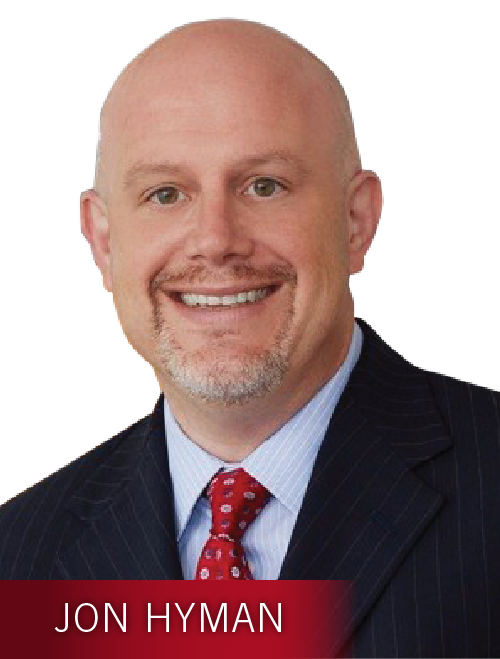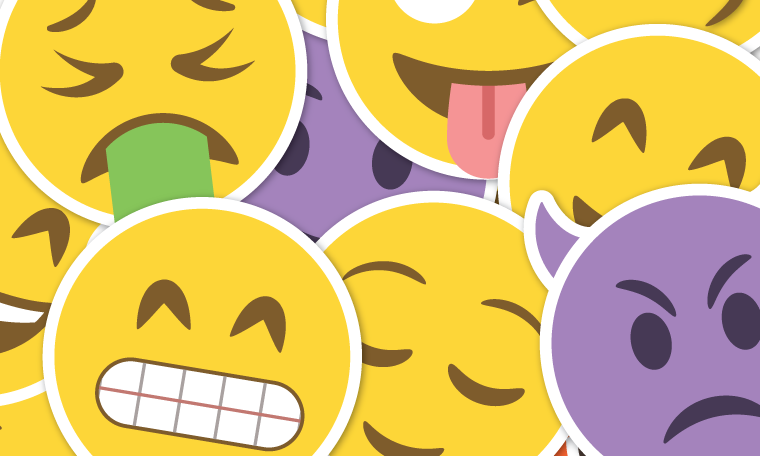Human resources technology managers are hot commodities.
The most desirable are well versed on the latest cloud-based platforms and apps, but that’s not all.
They have deep experience with project management. Perhaps more importantly, they also keenly understand the full life cycle of HR processes, from recruiting to succession planning — the better to direct staff in implementing new HR systems.
They’re on top of the critical roles that mobile and social play in recruiting new hires and engaging current employees. They can coordinate country-specific services with global HR systems. They know how to respond to the latest cyber security challenges threatening HR personnel. And, at a time when workforce analytics are becoming critical to organizations’ overall operations, they collaborate well with other departments that rely on people-based data to direct business decisions.
The need for this new breed of HR technology manager isn’t just at the top. Companies’ quest for HR technology staff who can tackle the latest and greatest extends from HR information services department heads to mid-level systems analysts and entry-level workers who can maintain workforce apps.
Demand for HR talent with the right mix of skills, experience, project management and process expertise is strong enough in some parts of the country it’s driving up compensation. Alfonse Visco, HR director at Computer Generated Solutions, Inc., in New York, increased the salary for an HRIS coordinator position he’s trying to fill by 20 percent more from what he would have offered a few years ago, or “even from one and a half years ago,” he said.
Other HR executives are using the carrots of better work, perks and work/life balance to make their HRIS job openings stand out. In addition to better work/balance, Anand Sampath, senior manager for HRIS at Boston Children’s Hospital, emphasizes the opportunities HR technology staff have at the 415-bed facility that they might not get elsewhere.
“It could be projects and initiatives that help someone’s career,” Sampath said. “Those are the kinds of things I try to offer, within reason.”
HR’s Digital Makeover Is Contributing to Demand
Interest in HR technology personnel with up-to-date skills has risen as more enterprises move from on-premise HR software to cloud-based services and smaller organizations graduate from Excel or paper systems to similar online workforce platforms. It’s hard to name an HR function that in the past few years hasn’t gotten , whether it’s recruiting and onboarding, team collaboration, training, performance reviews, benefits and wellness, engagement or managing contingent workers.
“Of all the companies ripping and replacing technology, the number one reason they’re doing it is because they want it to be easier to use for employees,” HR analyst Josh Bersin said during a workforce technology conference talk last year. “We’ve moved from HR technology designed to automate processes” to systems that encourage engagement to make employees’ work life better, said Bersin, principal and founder of Bersin by Deloitte, Deloitte Consulting LLP.
The need for HRIS staff could be one reason that unemployment for HR jobs overall stood at 2.2 percent in December 2016 compared to 4.7 percent for all jobs in the country. LinkedIn, Indeed and Monster list tens of thousands of open HR technology positions at all levels. The Labor Department’s Bureau of Labor Statistics predicts overall positions for HR managers, including HRIS specialists, will increase close to 9 percent through 2024, compared to 7 percent for all occupations.
Overseeing Local and Global HR Technology
As companies pile on HR technology applications, they’re looking for HRIS specialists with experience getting multiple platforms to work together. That’s no simple feat at a time when large enterprises use dozens of HR apps or more. Companies with global operations also need HR technology managers who can oversee centralized HR platforms for some functions, and country-specific ones for others. These same technology executives must stay abreast of HR regulations everywhere the business operates, and of the latest security safeguards worldwide.
 At Computer Generated Solutions, the HRIS coordinator job Visco is filling is based in New York and primarily manages HR services for the company’s U.S. workforce. However, the privately held enterprise software and outsourcing services provider is rolling out a global recruiting platform that country-specific applicant tracking systems will feed data into. The HRIS coordinator will need to ensure data from country-based ATS platforms is clean. “Sometimes it’s hard to find someone with all those skills upfront,” Visco said. “You need someone who has a spark, who can learn and has a will to learn.”
At Computer Generated Solutions, the HRIS coordinator job Visco is filling is based in New York and primarily manages HR services for the company’s U.S. workforce. However, the privately held enterprise software and outsourcing services provider is rolling out a global recruiting platform that country-specific applicant tracking systems will feed data into. The HRIS coordinator will need to ensure data from country-based ATS platforms is clean. “Sometimes it’s hard to find someone with all those skills upfront,” Visco said. “You need someone who has a spark, who can learn and has a will to learn.”
CGS, which maintains a 100-person HR staff for a global workforce of 7,500, digitized HR functions in 2008 and moved to web-based HRIS functions in 2011. In the past year, the company made a broader push into social media, security and cloud-based applications. Getting better workforce data and giving employees more access to people-related functions drove the changes, Visco said.
Five years ago, understanding how Facebook, Twitter and other social media platforms fit into recruiting or employee engagement would have been an afterthought on an HR technology manager’s resume. Now it’s a critical piece of the puzzle, Visco said. Today, social media use is so second nature for many younger workers “the social aspect isn’t difficult to find,” he said.
In the New York area, salaries for senior-level HRIS positions run from $80,000 to $120,000, said Tali Rabin, CGS’ senior vice president of HR. Along with technology skills, managers at that level also need to have “the DNA” to work well with people and to work at the fast pace that the company has adopted to keep up with digital-era changes. “As I look back on my 20 to 25 years of experience, it’s totally different, even from the past five years.”
Despite competition for HRIS staff with the right skills, CGS has not had problems attracting prospects for entry-level positions, most likely because the job is based in New York, which has an abundance of potential candidates, Visco said.
HR Processes Vs. Vendor Apps
Boston Children’s Hospital is typical of organizations overhauling operations to be more responsive to customers — in their case patients — and employees, and to prepare for future growth. Upgrading HRIS is part of that, creating a need for HR technology staff that can help manage the process.
The hospital, which has 11,400 employees and a six-person HRIS team in its 90-person HR department, is just starting a major update of its human capital management setup. Existing systems, which are more than 10 years old, include on-premise software from Oracle PeopleSoft for core HR technology and IBM Kenexa Brass Ring’s cloud-based recruiting platform. They also include a cloud-based NetLearning learning management system from HealthcareSource.
The hospital’s core HCM system will likely remain on premise but Sampath, the senior HRIS manager, said at some point he might look at switching to the cloud. Regardless, the hospital already uses enough other cloud-based HR technology that it’s critical for HRIS staff be able to collaborate with vendor representatives as services are being adopted and on an ongoing basis. “Say you have tickets the vendor has to resolve or you need them to be part of an initiative,” Sampath said. “The actual work will be done by the vendor but (staff) has to explain what needs to be done and the timelines.”
When Sampath hires staff, as he now for an open HR systems analyst position, he prioritizes candidates that have experience with HR processes over candidates with experience on a specific vendor’s platform. Applications are easier to learn and run than they used to be, and platforms change all the time, he said. It’s more important for a candidate to understand the workforce lifecycle from recruiting to open enrollment to retirement so they can connect the dots and be more effective in their role. “I can train people on applications,” Sampath said. “It’s hard to teach process and business functions if you haven’t lived through them.”
Demand for HRIS analysts is so high, even prestigious workplaces like Boston Children’s Hospital, which is affiliated with Harvard Medical School and ranked nationally in 10 pediatric specialties by U.S. News and World Report, faces stiff competition. An abundance of opportunities in the Boston area is one factor, as is the need for smart HRIS personnel across industries. “We’re competing with financial services and startups” for the same talent, Sampath said.
Historically, outside consultants for technologynology integration specialists or consulting firms were a steady source of job candidates. But videoconferencing, mobile apps and other technology have cut down the time HR technology consultants spend on the road, making them less interested in in-house jobs as they used to be, Sampath said.
That’s where being able to offer someone interesting projects, a positive workplace culture, and better work/life balance comes into play, he said.
Replacing Clerical Staff with Business Analysts
HR technology that gives employees direct access to payroll, benefits and other people-related services has rendered many HR clerical jobs obsolete. According to BLS forecasts, jobs for HR assistants, minus payroll and timekeeping, are expected to shrink 4.1 percent by 2024.
Some HR departments have responded by replacing HR administrator positions with jobs for systems analysts who implement and maintain HR technology apps, and collaborate on reports or projects with other departments.
The HR department within the Middlesex County, New Jersey, county government went through just such a transformation. Before 2013, the county’s HR department used mainly manual processes. “It was paper driven, with file cabinets all over the place,” said John Pulomena, administrator for the north-central New Jersey county, which has 25 cities and 825,000 residents and is the second largest in the state. “Any time an employee had a question they had to call the HR office.”
That year, the county rolled out a cloud-based HR platform, beginning with payroll, as part of a larger initiative to automate county services. The platform, from Unicorn HRO LLC, has a self-service portal so employees could look up things like how many sick days they had accrued on their own. It allowed the HR staff to function as business analysts and focus on more big-picture issues, such as types of benefits the agency should offer, Pulomena said.
After the switch, the county trimmed five positions from its 25-person HR department and moved from a 50-50 mix of clerical and skilled positions to mostly skilled work. For HR staff in clerical roles who couldn’t perform in an analyst capacity Pulomena found jobs in other county departments that were a better match for their skills. Other people retired and or left the agency. “When we backfilled, we backfilled with people with skills we needed,” he said.
Today, the county’s HR staff is split between a core HR office of 10 and HR personnel who are embedded in various county departments but meet regularly for training and other work issues.
The upgrade has been a boon for HR department staff, which is enthusiastic about the role they’ve played in making people-management processes more efficient and effective for the county’s approximately 2,000 employees. “They don’t have to focus on data entry and sitting in front of a computer analyzing numbers,” Pulomena said. “They can look at what we should be doing to enhance the experience of our employees.”
Michelle V. Rafter is a contributing editor in Portland, Oregon. To comment, email editors@workforce.com.




















